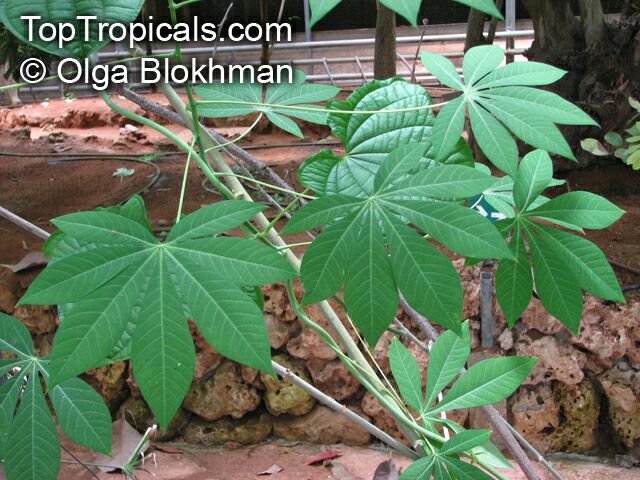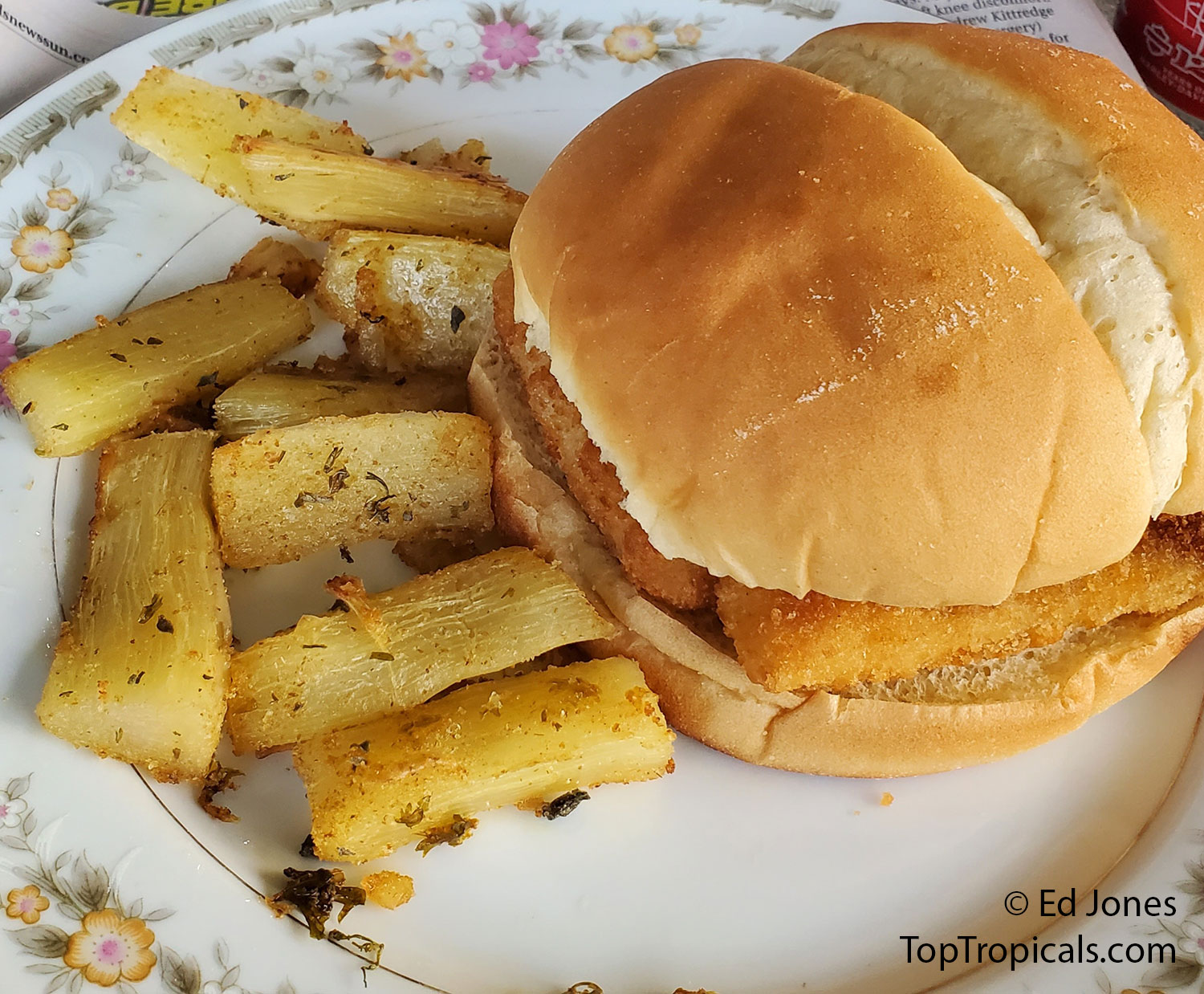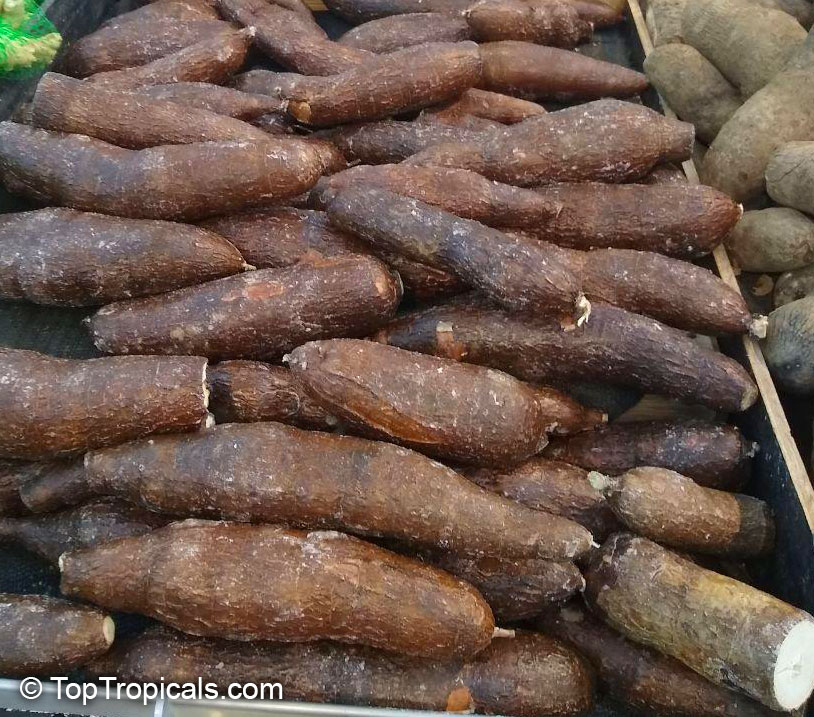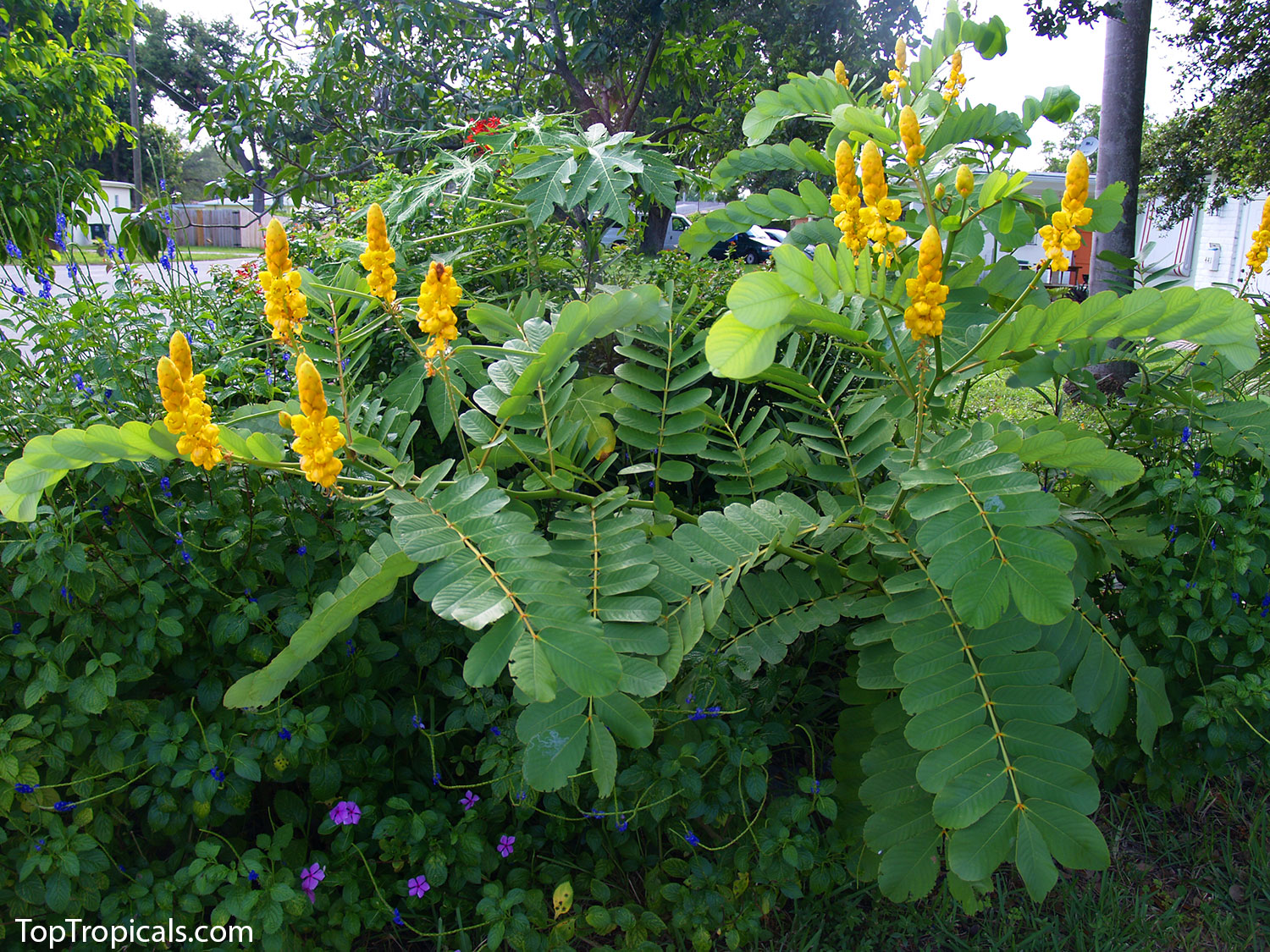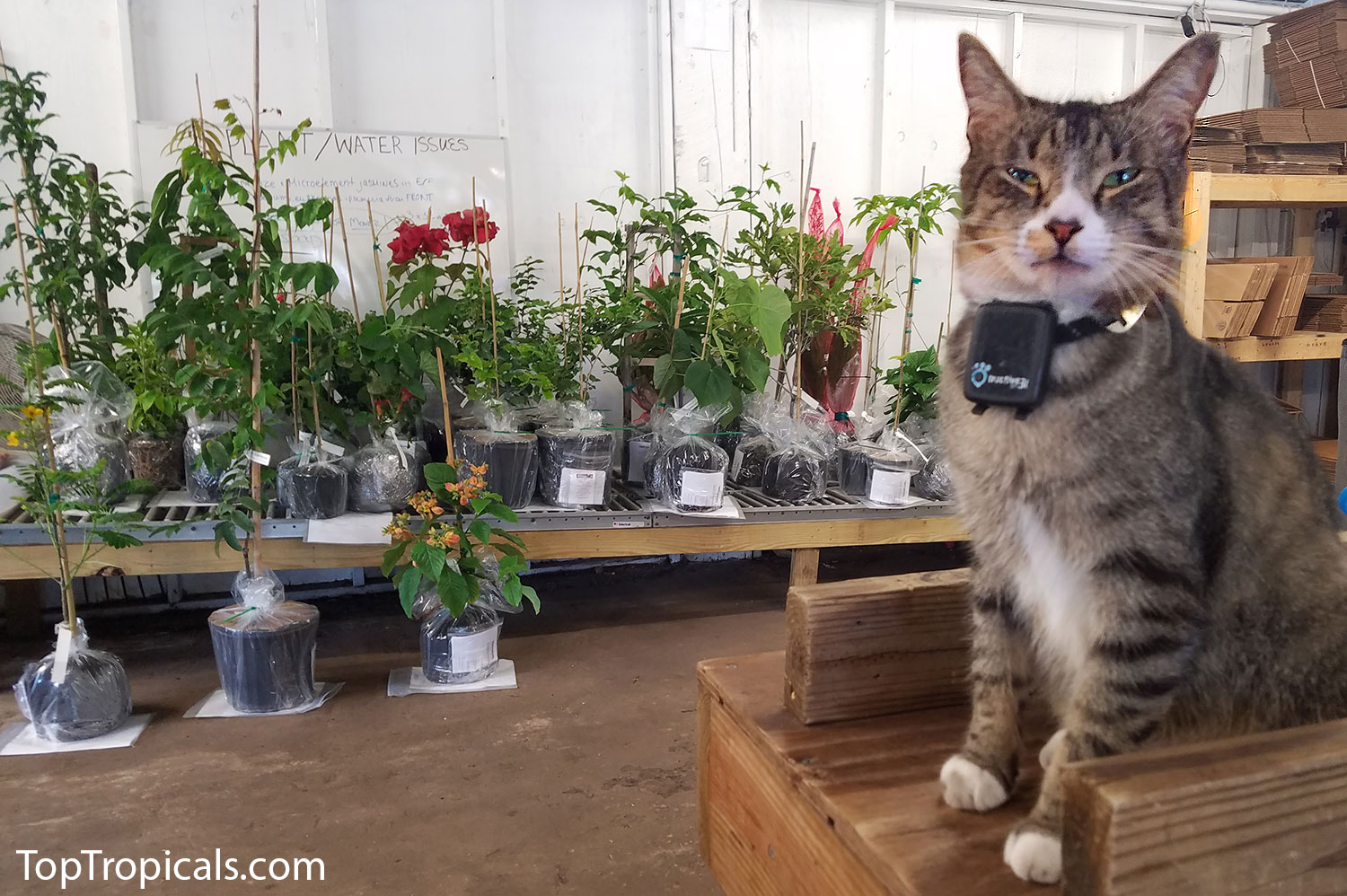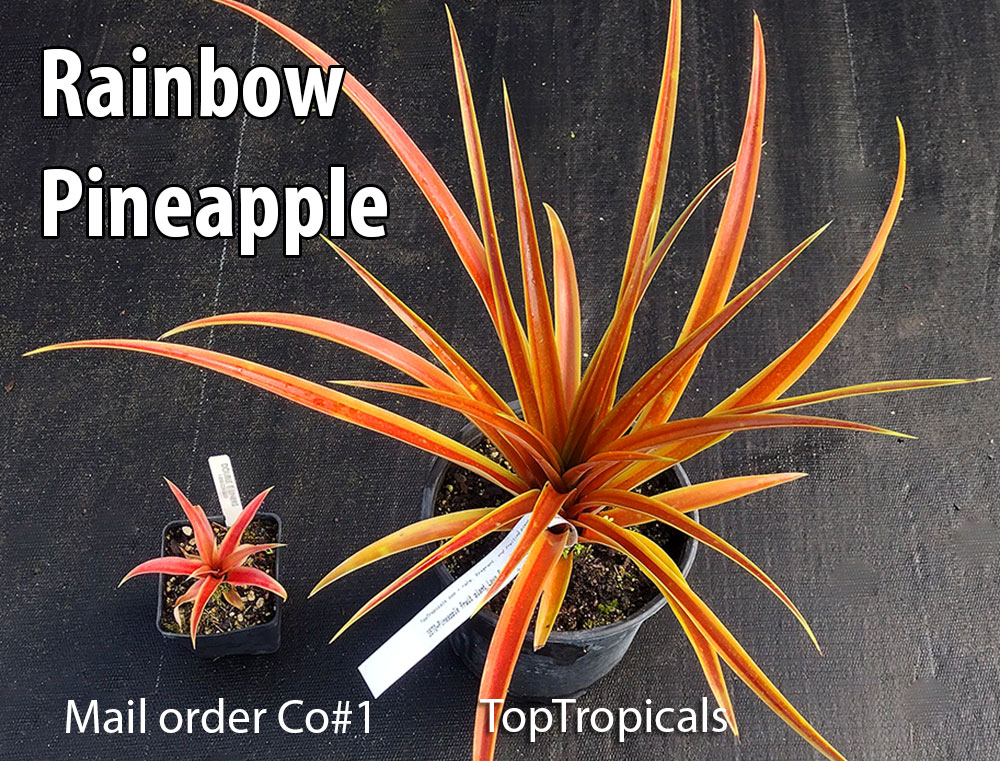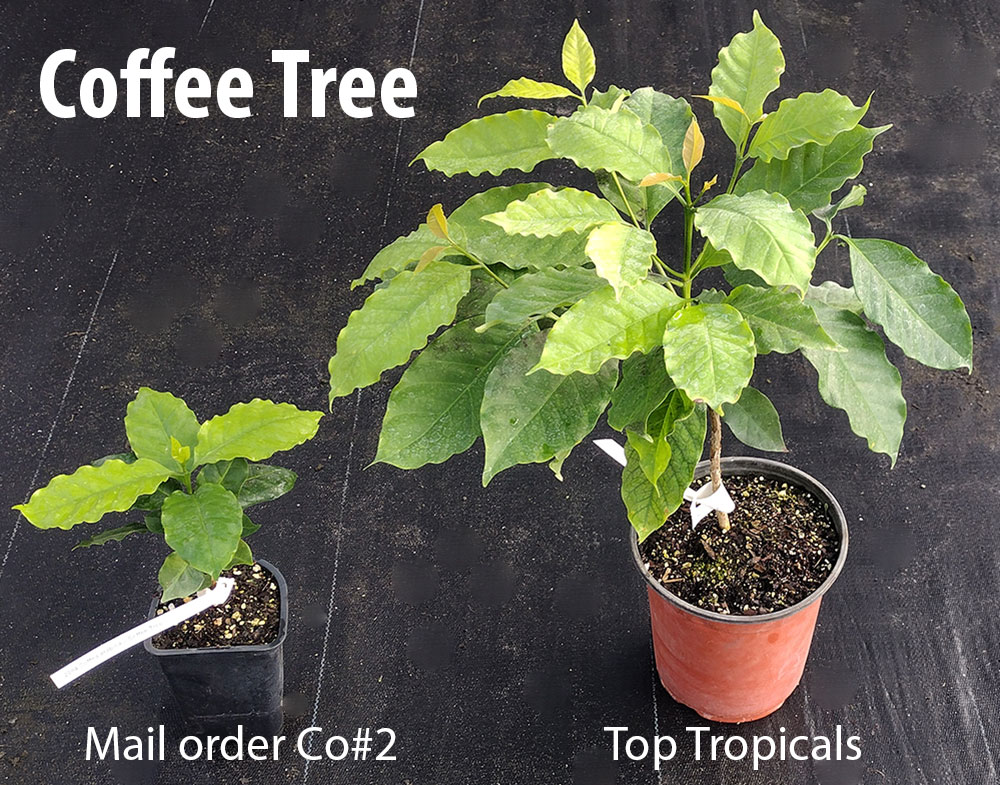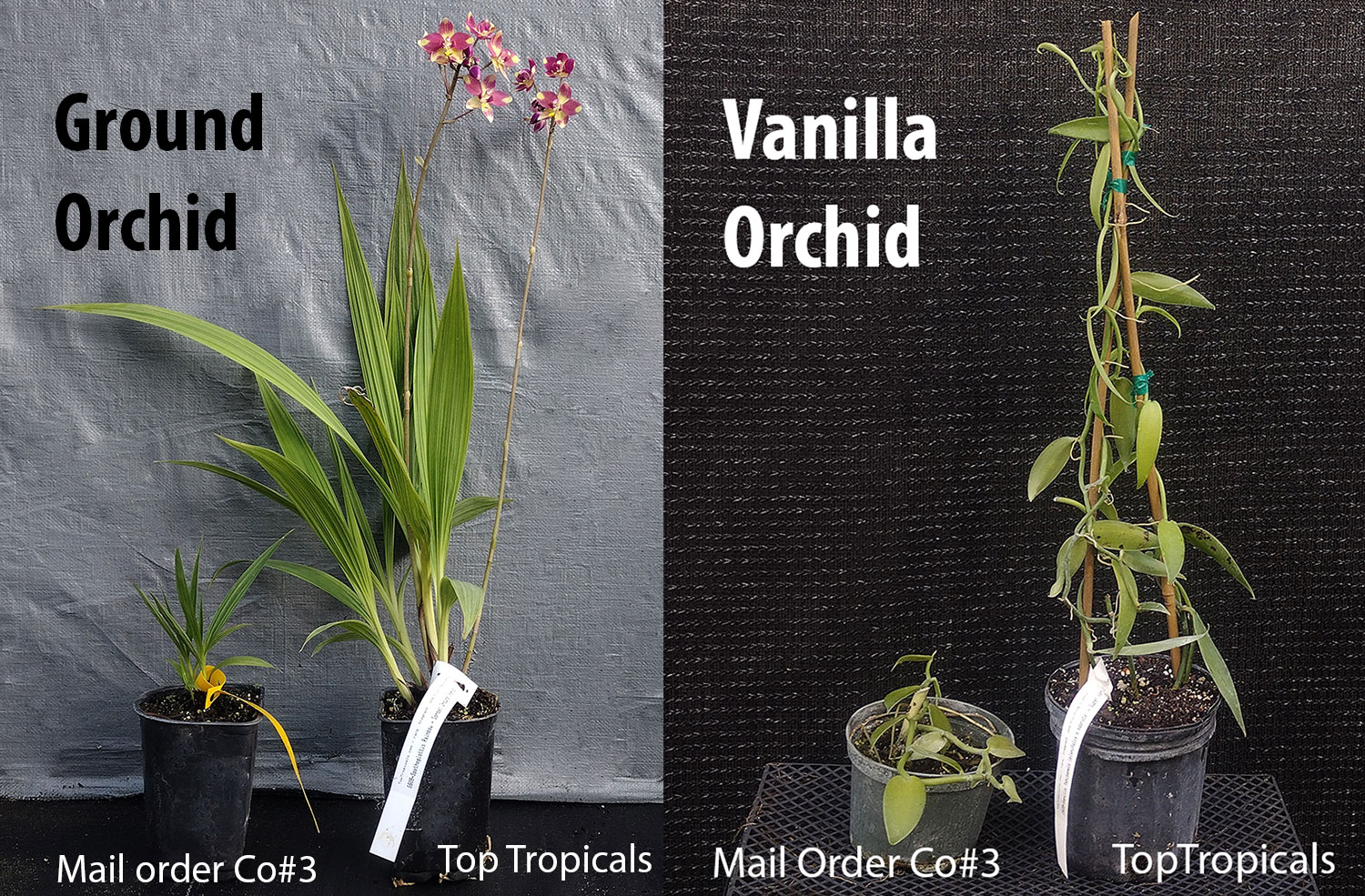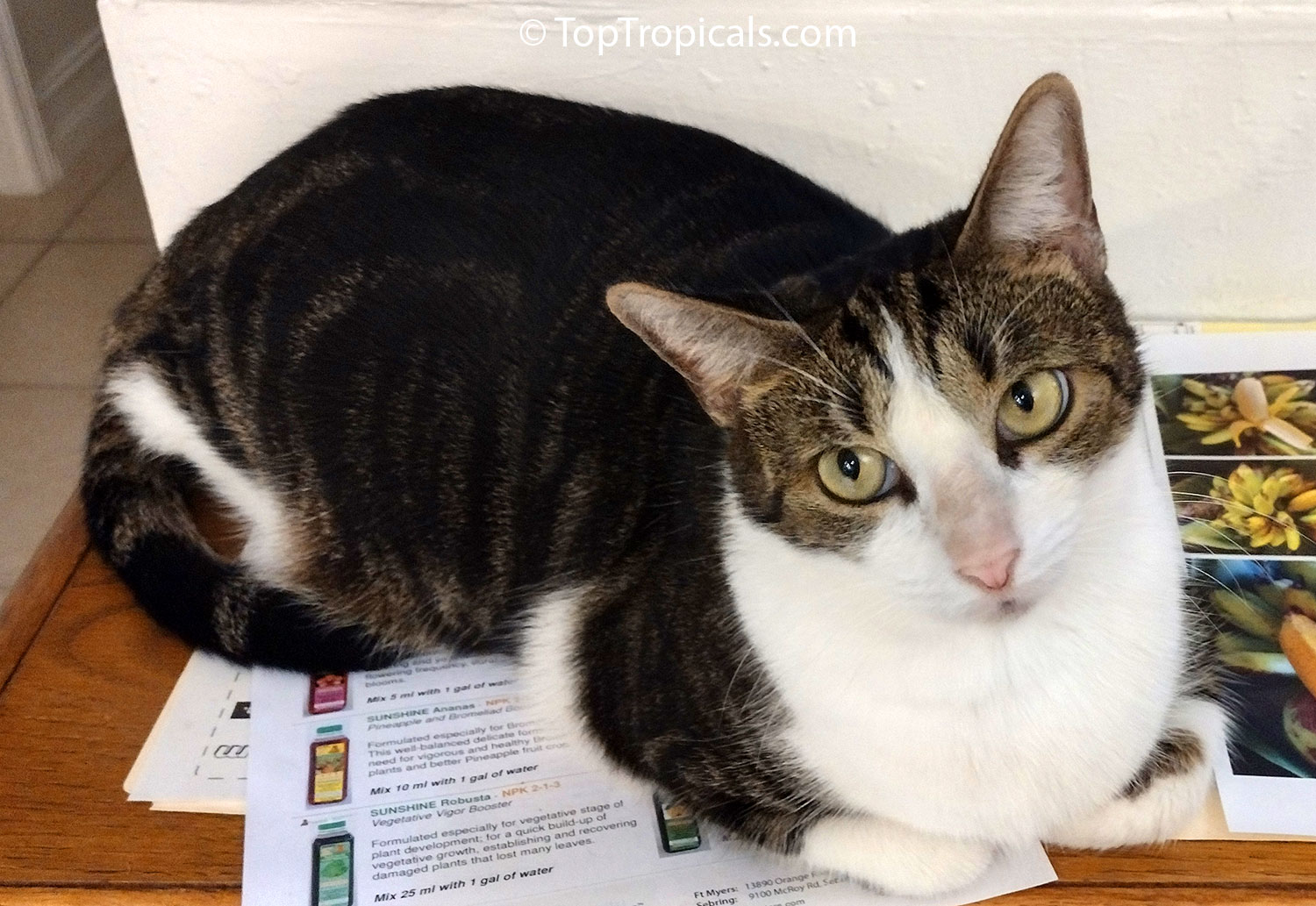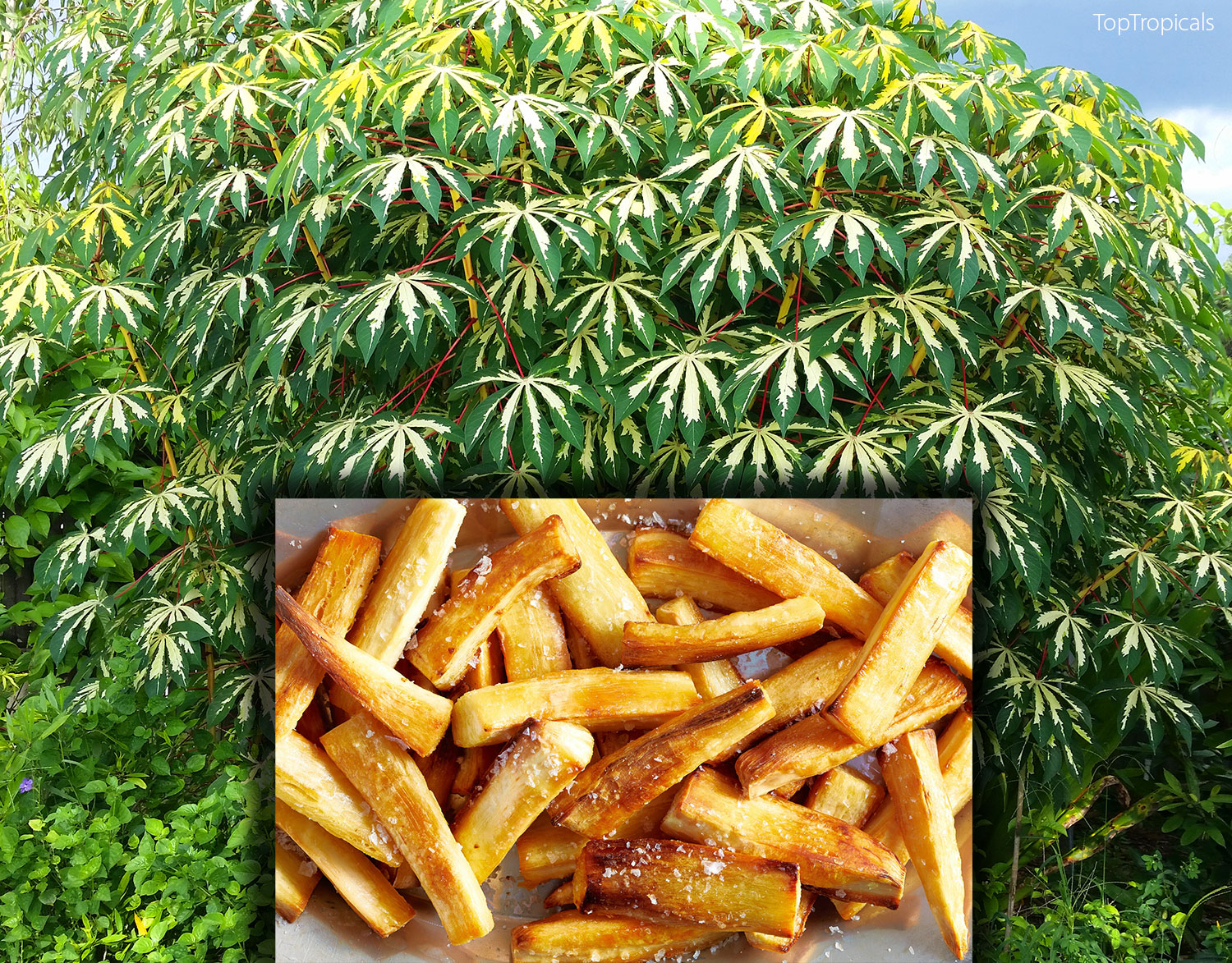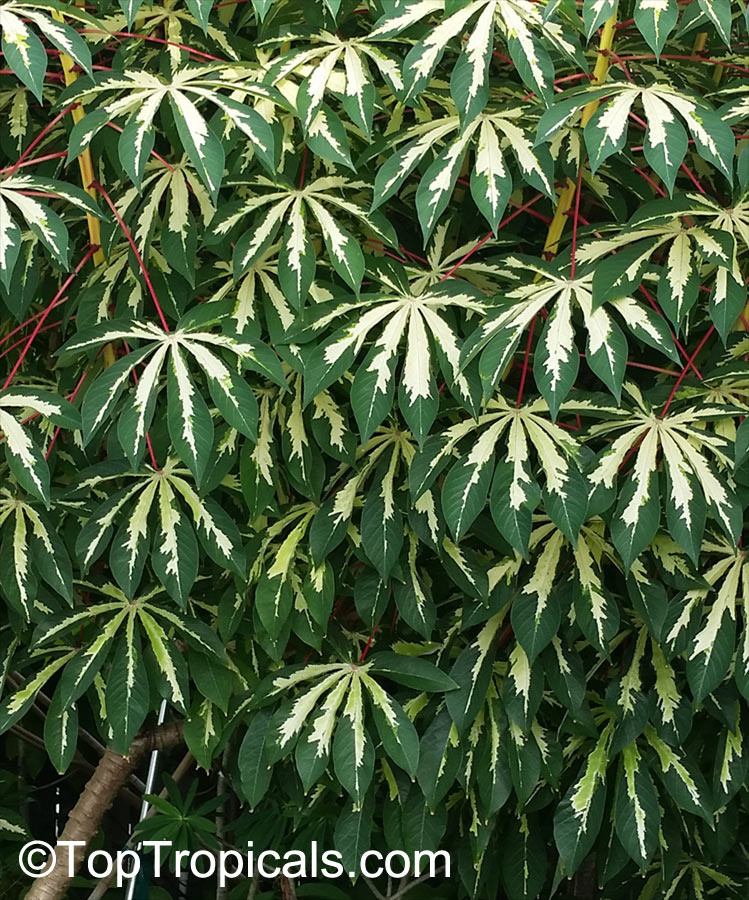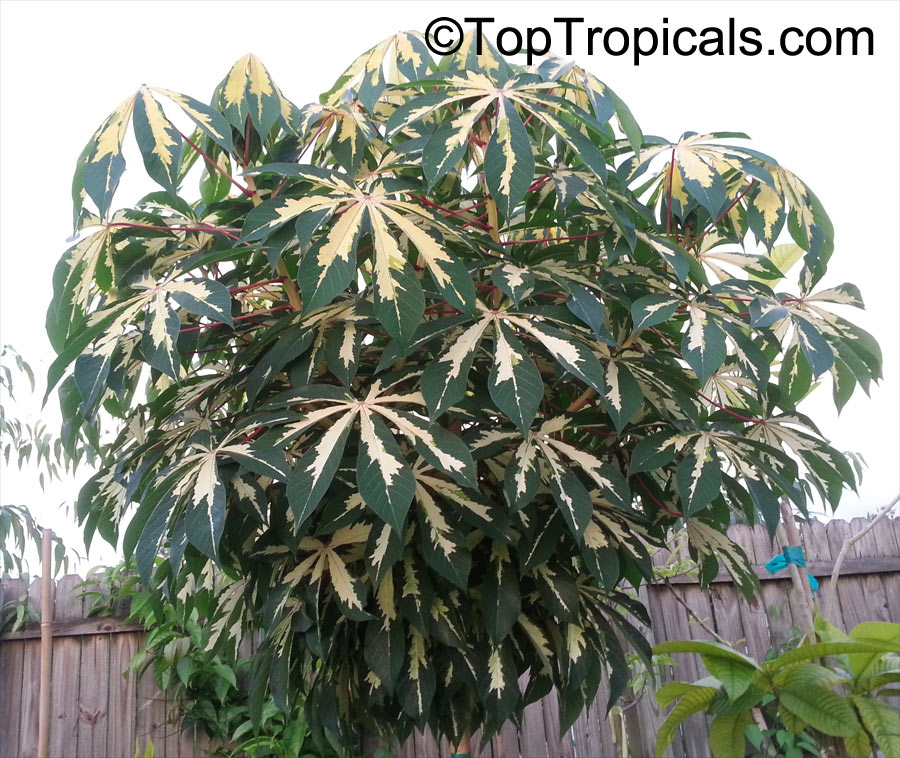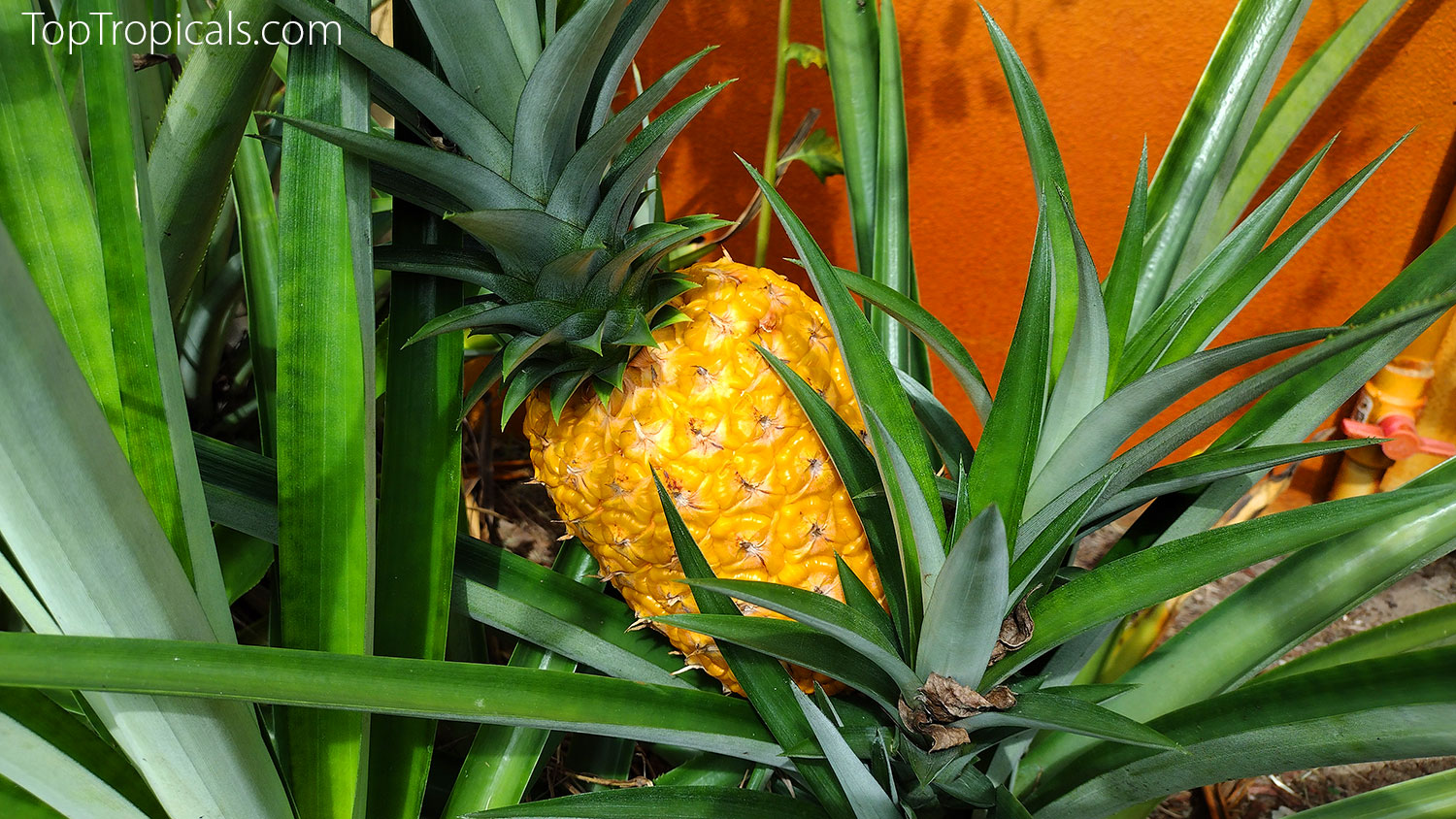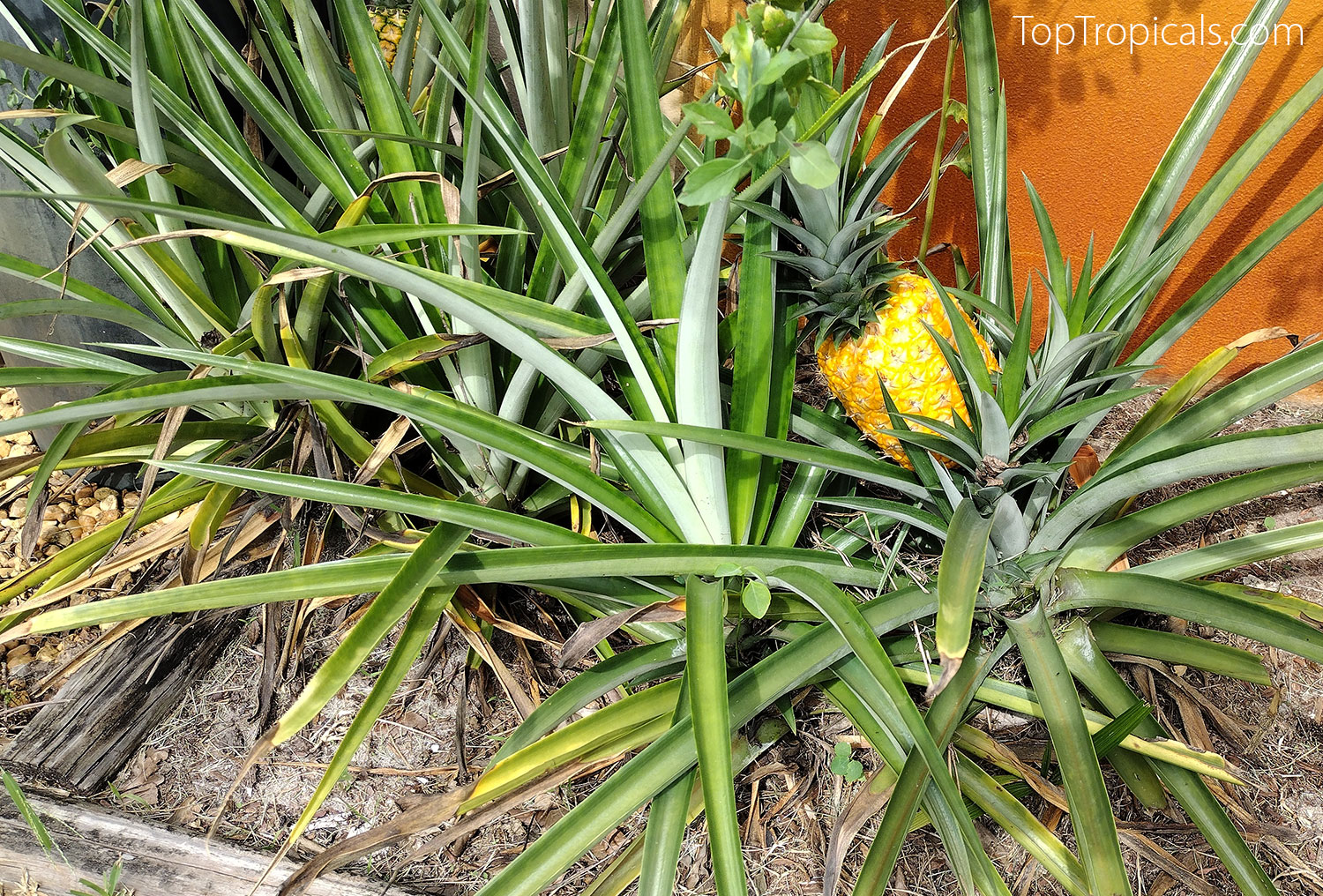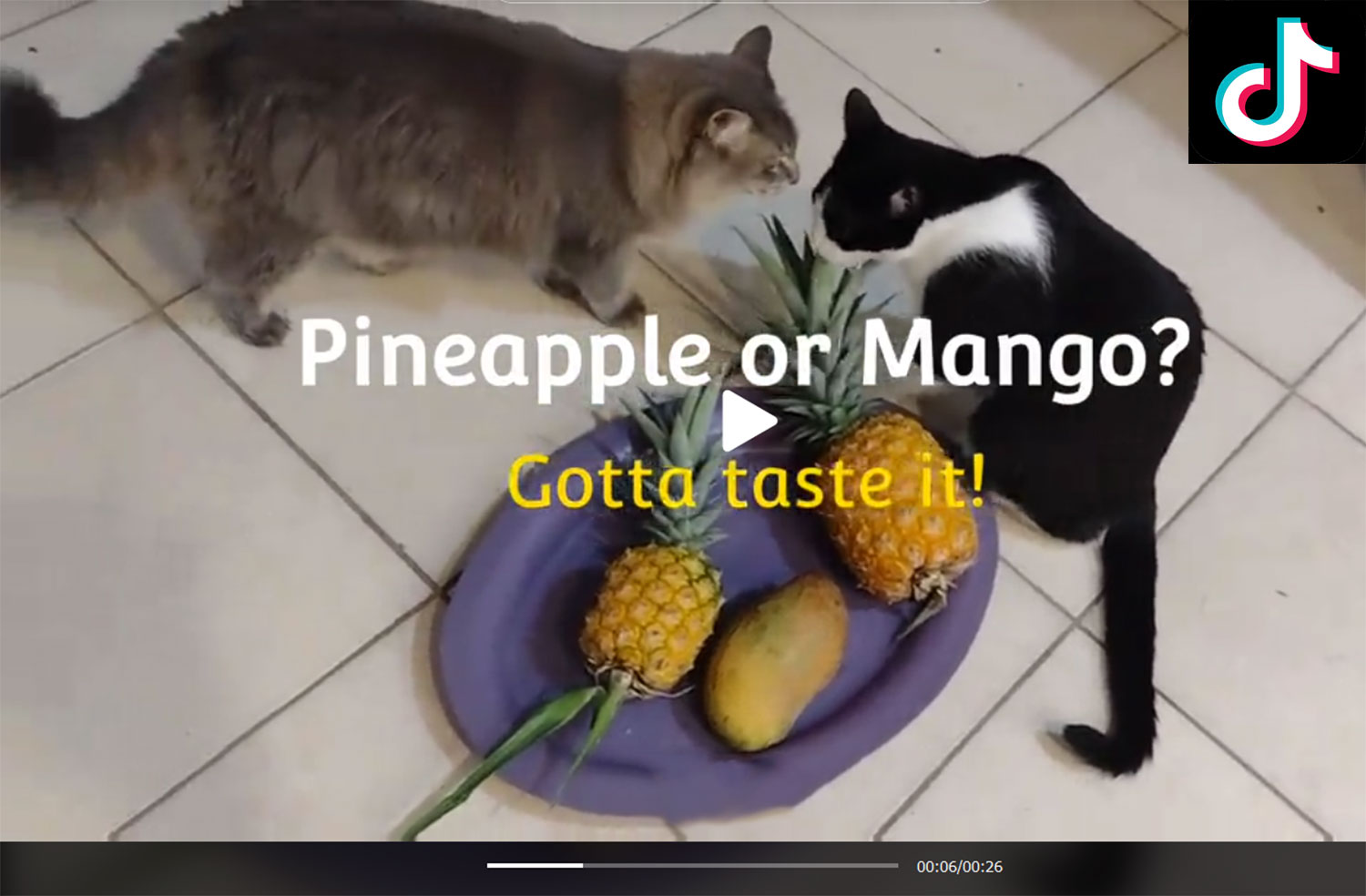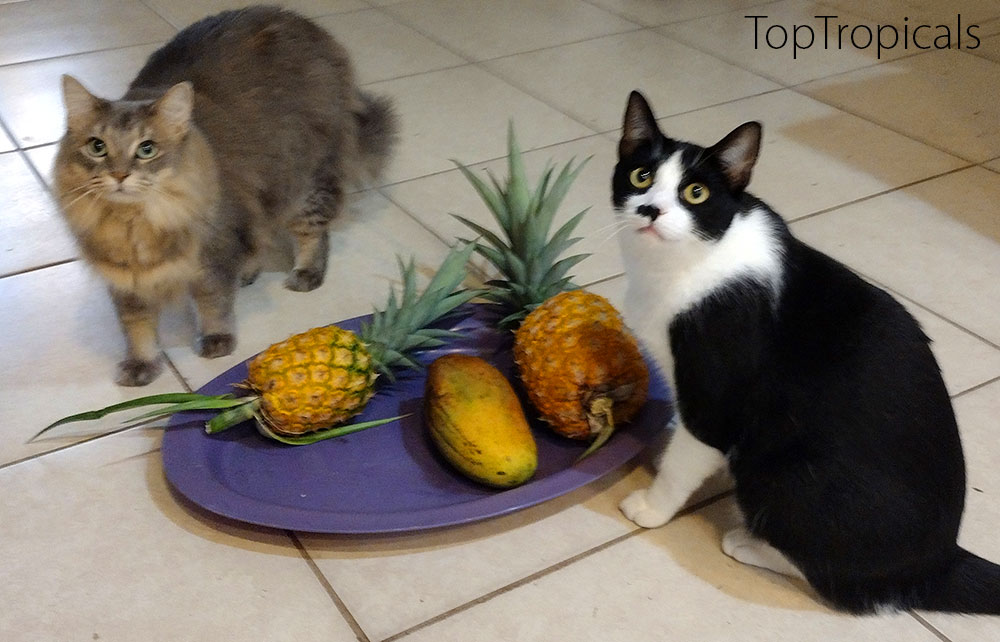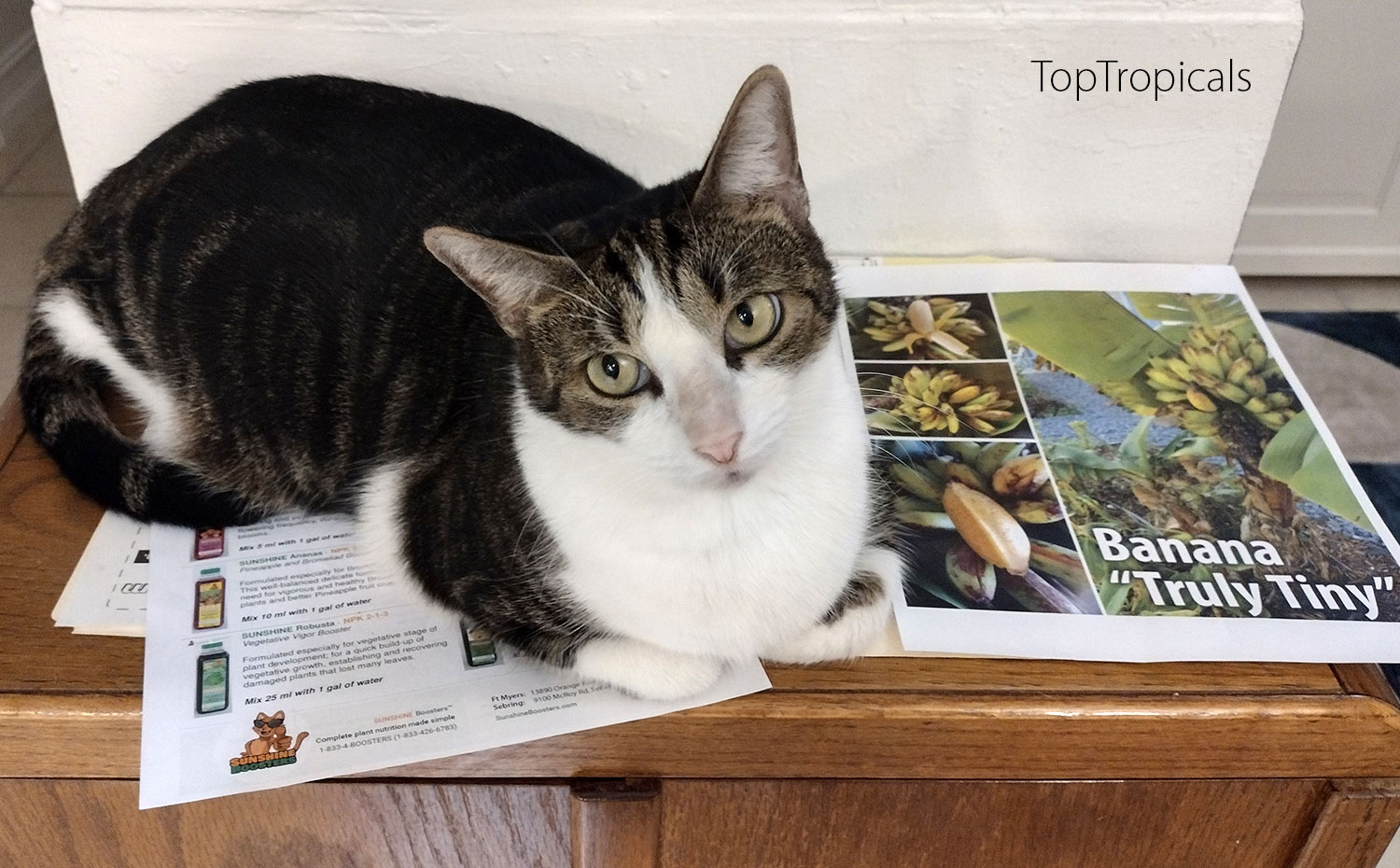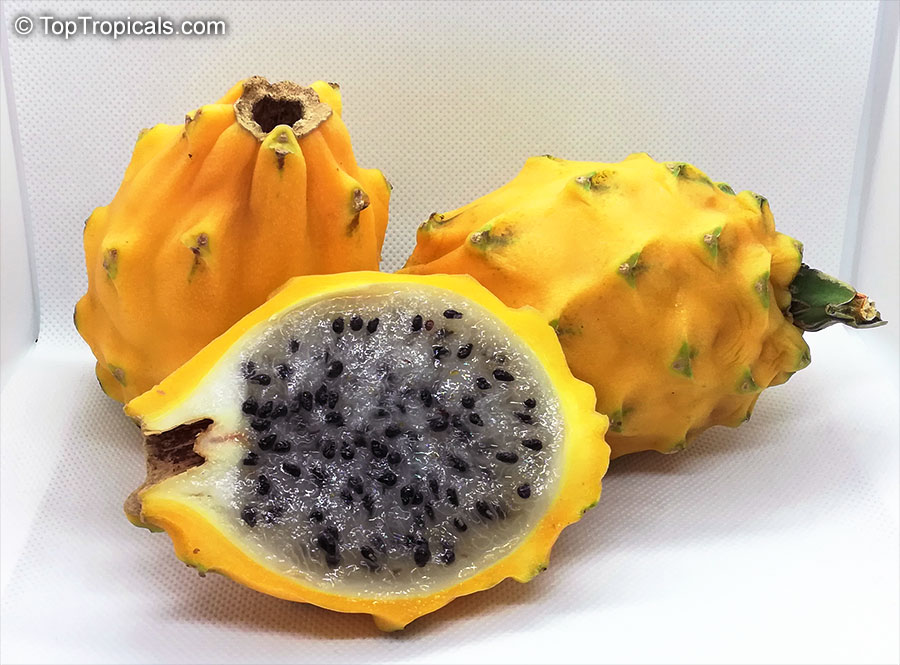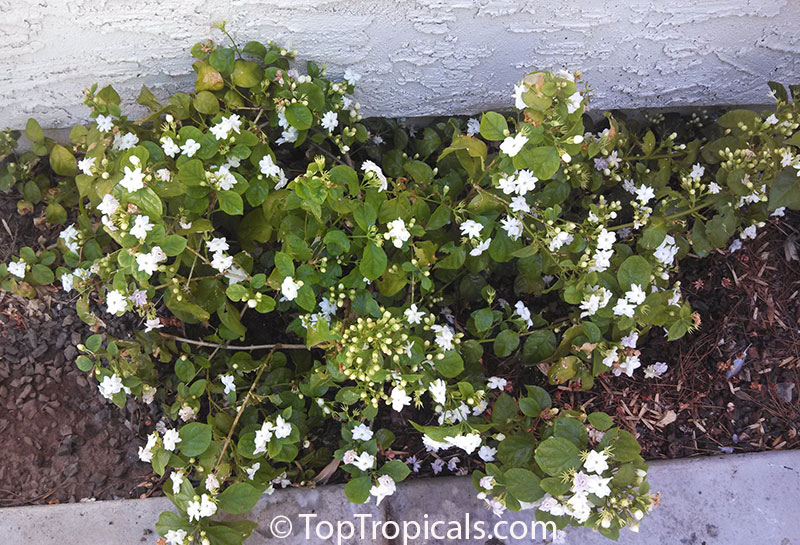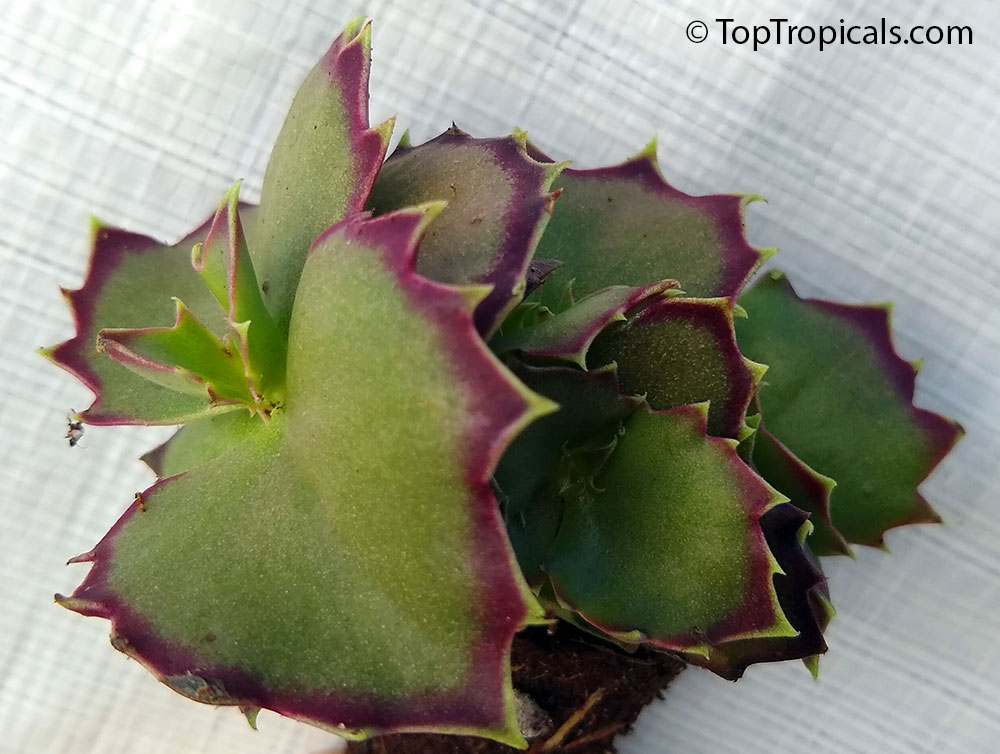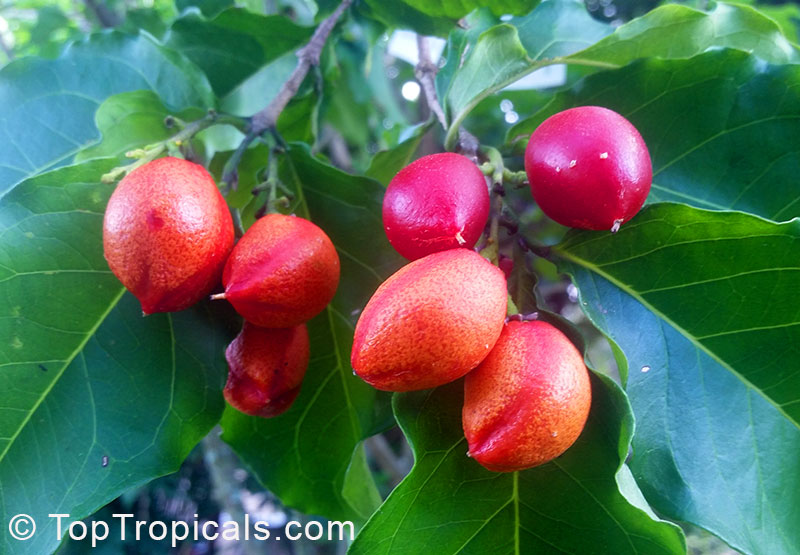Garden Blog - Top Tropicals
Date:
Event Special:
Yuca Root - Cassava - Tapioca - Manihot...
Reminder: now is the time to plant Cassava - Yuca Root!
It takes one year to grow a good root crop. This wonderful tropical root vegetable is grown as a handsome shrub and harvested for its root and leaves that are high in starch. The plant contains low levels of protein in the root and high levels in the green leaves. And Cassava fries are both delicious and healthy! Yum! (see the recipe)
Date:
NEW VIDEO:
Senna alata - Empress Candle, Candelabra Plant
Need a fast growing, colorful, exotic looking solution for your garden?
Here it is!
Empress Candle, or
Candelabra Plant - is a true garden wonder. Imagine a plant that grows
fast, almost always in bloom, and covers large spaces with its lush leaves...
Empress Candle has beautiful golden flowers resembling candles. The huge
leaves create nice cool shade for many feet around it which keeps weeds away.
Providing full sun and regular water Empress Candle grows up to 10 ft wide and
6-8 ft tall just in one or two seasons!
Subscribe to our Channel:
Stay updated with TopTropicals Videos by subscribing to our channel at YouTube.com/TopTropicals and get our latest video news of what is fruiting and blooming!
Date:
Does Size Matter?
TopTropicals plants vs other mail order plants
Q: I purchased various plants via mail order (including a Coffee tree and some flowering vines) from companies *** and ***, but they did not survive, possibly due to their small size and the stress of shipping. Could you provide information about the size of your plants, their resilience to shipping stress and the time required for establishment?
A: Plants, as living beings, may experience stress during a few days of travel in a dark box. However, the critical factor influencing their survival is the plant's size. Most of our plants are grown in pots ranging from 1 to 3 gallons, have established root systems and developed branches. Some even feature flowers and fruit, although these may drop during transit. We've included images comparing our 1 gallon size plants with those from other mail-order firms we previously obtained for our own collection.
Understanding that post-shipping plant establishment is a gradual process is crucial. Yet, most plants handle shipping well and commence new growth within days to a couple of weeks post-arrival. Here are some success pointers:
1) Opt for a container matching the root ball size, avoiding excessive
sizing until growth initiates.
2) Begin in a shaded area, progressively transitioning to brighter
spots.
3) Apply
Sunsine Epi spray to lessen stress and enhance vitality.
4) Initiate fertilization once the plant displays fresh growth.
For more information on how to establish mail order plants, simply download our Plant Care Guide.
Date:
Cat Horoscope
Two Cat Zodiacs: Cancer and Leo
By Alex Butova, the Witch of Herbs and Cats
Photo above: James Coconuts
How to know the astrological sign of your cat?
The astrological sign of a cat can be determined by either their date of
birth or adoption, as adoption is often considered a second birth for cats.
With this information, one can discover the astrological traits that describe
the cat, such as their independence, diva-like tendencies, sense of humor,
intelligence, and more. Additionally, it's also important to consider the
astrological relationship between cats and plants...More >>
Our Summer cats
Cancer Zodiac sign is represented by James Coconuts (his second day of birth is 7/15/2017 when he was rescued) and his best friend Riki. They live at our Bfarm in Sebring, are very affectionate and have intuitive sense of when we need someone close... they will readily snuggle up!
Leo Zodiac classic representative is Snitch, the Cat with Charisma - he runs and rules our Garden Center in Ft Myers. Come and meet this Purrson in person!
Photo above: Riki
Photo above: Snitch
Date:
Yuca Fries Recipe
Food from your garden
Ingredients:
1 medium-sized Yuca Root
2 tablespoons olive oil
Salt, to taste
Optional: spices or herbs of your choice (paprika, garlic powder, cayenne
pepper, etc.)
Instructions:
Prep the Yuca: Peel the Yuca root with a sharp knife and remove any fibrous parts. Cut the Yuca into evenly sized sticks or fries.
Boil the Yuca: Bring a pot of salted water to a boil and add the Yuca fries. Cook for about 10-15 minutes until the fries become tender but not mushy. You should be able to pierce them easily with a fork.
Drain and Cool: Drain the boiled Yuca fries and let them cool for a few minutes. Preheat your oven to 425F during this time.
Seasoning: Toss the slightly cooled Yuca fries in olive oil, ensuring they are evenly coated. Add a pinch of salt and any additional spices or herbs you prefer for added flavor.
Baking: Arrange the seasoned Yuca fries in a single layer on a baking sheet lined with parchment paper or aluminum foil.
Bake: Place the baking sheet in the preheated oven and bake the Yuca fries for about 25-30 minutes, flipping them halfway through to ensure even browning.
Serve: Once they turn golden and crispy on the outside, take the Yuca fries out of the oven. Serve them hot as a delicious and unique alternative to regular fries. You can enjoy them as a side dish with your favorite dipping sauce or as a snack on their own.
These Yuca fries are not only tasty but also a great way to introduce friends and family to this delightful tropical root vegetable! Enjoy your yuca-culinary adventure!
Date:
Yuca root, Cassava, Manihot, Tapioca...
Food and Beauty
Q: Can you recommend a pretty plant for my edible garden? Something that is not only useful but also very ornamental.
A: Introducing the fabulous and flamboyant star of the garden - Manihot esculenta, better known as the Yuca Root! This tropical root vegetable plant is the epitome of botanical fashion, showing off its cheerful and showy foliage like it's walking the runway of a tropical paradise...
The most stunning variety is Variegated Yuca root. You won't find this rare and remarkable variety of Yuca root just anywhere! It's like the unicorn of the edible plant world, combining practicality with pure visual delight. Not only can you feast on its starchy goodness, but you can also proudly display it as a stunning ornamental piece in your garden.
This tropical root vegetable knows how to put on a show, making its home as a shrub in subtropical zones across Asia, Africa, the Caribbean, and South America. Its roots and leaves are the real stars of the show, packed with all that starchy goodness. But hold on, there's a little twist to this drama! The root contains low levels of protein, while the green leaves are practically gym buffs with high protein levels.
Now, we must address the elephant in the botanical room - the mistaken identity crisis. Some folks confuse our lovely Yuca Root with Yucca, but let's clear things up: Yucca is a no-go in the culinary world. It's a non-edible plant from the Agave family, and you definitely don't want to cook that up for dinner!
So there you have it, folks! The Yuca Root, a true superstar of both the kitchen and the garden. Delicious, eye-catching, and ready to add a dash of tropical charm to your life. Get one for yourself, and let the good times yuca-roll!
Date:
Top varieties of pineapples
Q: I want to grow my own pineapples, which varieties do you recommend for the best production? Do I need any special organic fertilizer?
A: Growing your own pineapple is pure bliss. Watching the transformation from a small crown
into a luscious fruit is immensely rewarding. Every tropical gardener should
experience the joy of growing this tropical gem and relishing its sun-kissed
sweetness straight from the garden. Pineapples are easy to grow and can
fruit in containers too, so if you live in a colder climate, no problem! They
will take very little space in your greenhouse or sunroom. Just remember to feed
your pineapple plants with Sunshine Boosters so they will feed you the biggest and the sweetest
fruit! Sunshine Boosters are natural, organic-amino-acid based plant nutrients
that are perfect for any edibles.
There are several varieties of pineapples in commercial cultivation. Below
are the most interesting cultivars. Discover the pineapple paradise!
Elite Gold: Bursting with tropical flavor and vibrant gold flesh, Elite Gold dazzles with its unique taste and ornamental beauty.
Florida Special: Perfectly balanced sweetness and acidity, this variety thrives in warmer climates, gifting you a taste of Florida's sunshine.
Sugar Loaf: Irresistibly sweet with a hint of citrus, Sugar Loaf's compact size makes it an ideal choice for container gardening.
White Jade (Spineless Sweet): Exceptionally sweet and without spines, White Jade pampers you with a delectable, thorn-free harvest.
Lava Burst (Burgundy Variegated Rainbow): This visually stunning ornamental pineapple variety boasts striking burgundy and green leaves, resembling a rainbow of colors. Its fruit edible but small; its exceptional beauty adds a touch of exotic elegance to any garden or indoor space. Lava Burst is a delightful conversation starter and a captivating addition to your plant collection, making it a favorite among pineapple enthusiasts for its aesthetic appeal.
Embrace the sense of accomplishment and the satisfaction of savoring homegrown, mouthwatering pineapples - nature's sweetest gift!
Read more about Pineapples: The most luscious Hospitality Fruit.
Date:
How cats eat pineapples
TikTok Reels from TopTropicals
Our PeopleCats love roaming in the gardens. They often guide customers in our Garden Center, and their favorite isle is fruit trees! At this time of the year, Pineapples are ripening, and these fruit are always fun for both people and PeopleCats.
In this short video, Philemon and Scooby are discovering new tastes of Pineapple varieties.
More to see: Watch Philemon eating Avocado!
Discover more exotic plants and fun garden happenings from our TikTok updates!
Subscribe to Top Tropicals TikTok:
Date:
Easy,
stress-free plants
for Summer planting
Q: With the rising temperatures, I'm concerned about shipping my plants safely. Can they withstand the heat during transit? Also, is it okay to plant them in the ground now, or should I wait for cooler Fall weather?
A: Your concern about shipping plants in hot weather is valid. For sensitive plants, we'll delay shipping until conditions are more favorable in your area. However, there are plenty of heat-tolerant tropical plants that handle shipping well with minimal stress. These plants adapt easily when planted during the hot summer months. Simply follow the included planting instructions, gradually acclimate them to full sun, and they should thrive.
Certain flowering tropical plants, such as Allamandas, Calliandras, Caesalpinias, Adeniums, and Clerodendrums, are excellent options for shipping and establishing during the summer. Flowering vines like Jasmines also adapt well. Consider using Sunshine Booster fertilizers to promote robust growth, they are safe to use right after planting.
Additionally, many fruit trees flourish in heat. Mangoes, Avocados, Pomegranates, Pineapples, Loquats, Eugenias - Tropical cherries, Bananas, Jackfruits, Dragon Fruit, and Olive trees are great choices for summer planting. Noni trees are hardy survivors and usually ship and grow well during the summer, in spite of their lush tropical leaves.
Feel free to check with us about the specific plant you plan to order for its suitability in summer shipping. We're here to take care of your green babies and address your year-round planting needs!
Pitaya, Yellow Dragon Fruit, Selenicereus megalanthus
Jasminum sambac Maid of Orleans thrives and blooms in hot sun
Kalanchoe synsepala Magnificent - Walking Cup Kalanchoe, spectacular plant, loves dry and hot conditions
Date:
NEW VIDEO:
My new, rare, exotic fruit tree -
the Peanut butter fruit tree from Top Tropicals
By Scott Riddle
Ready to dive into your first-time mail-order plant experience? If you've ever been curious about what really happens when plants take a trip through the mail, this is the video you've been waiting for!
Get ready to embark on a mail-order gardening adventure with the one and only Scott Riddle, our customer from sunny California! What just landed in his mailbox was a package from Top Tropicals... This isn't an ordinary delivery - it's a Bunchosia argentea, a.k.a. the quirky Peanut Butter Tree!
You didn't know that peanut butter can grow on a tree?... Here at Top Tropicals we have a tree for everything - even for !
And hey, it's not just about plants - Scott's got an too! Brace yourselves for a rollercoaster of gardening escapades and loads of fun videos. Don't be shy, hit that like button, share the green-thumb goodness, and of course, make sure you subscribe!
Watch our original Peanut Butter Tree video:
Subscribe to our Channel:
Stay updated with TopTropicals Videos by subscribing to our channel at YouTube.com/TopTropicals and get our latest video news of what is fruiting and blooming!
